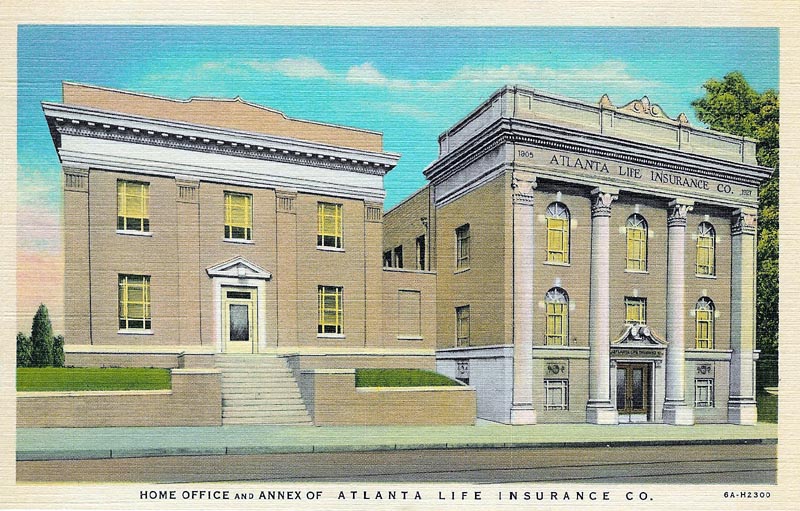The National Trust for Historic Preservation hosts the
National Preservation Conference and each year more than 2,000 attendees participate in a series of field sessions, education workshops, and tours that showcase local examples of architecture, historic preservation and community revitalization. The Trust's mission is to provide "leadership, education and advocacy to save America's diverse historic places and revitalize our communities."
The conferences are solidly branded and marketed to a wide range of preservation professionals and enthusiasts alike. This year, the conference is held in Indianapolis and has been given the tag line "Preservation at the Crossroads", alluding to Indianapolis' convenient location at the center of several major roadways - but also to provide a dramatic theme to an otherwise directionless event. Staffers and speakers promise engaging sessions where topics of national concern and interest are discussed. There are workshops, training sessions, field trips, and lots of flowery rhetoric - yet, somehow, very little substance for the preservation professional.
Of course there is the congratulatory back-slapping, the awards ceremonies, the sponsor exhibits, and speeches thanking participants, advocates, and the tireless work of preservationists everywhere. That is to be expected. I am sure that the National Convention of Sandwich Bread Bakers has its fair share of felicitous speeches too. And it would be remiss of the Trust to not offer plenty of opportunities for socializing - the free booze is one of the few real perks of these things. Its not all bad.
But, after the already prohibitive registration fee, the cost of a flight, hotel room, meals, and incidentals, my expectations for content are quite high. Free booze and some kind words get me out of the house - to get me to Indianapolis, there has got to be a lot more.
Last year, I went to the
Spokane conference on my company's dime. I attended sessions titled "Know Your Strengths: GIS in Historic Resource Surveys and Predictive Modeling", "Rightsizing and Preservation: Continuing the Conversation", "When Demolition Is the Only Option", "Mitigation Matters: Getting Creative", and "Federally Speaking—the History and Future of Our Most Important Historic Preservation Laws". Catchy headlines and confident intros brought me into the session rooms of the convention center. Reluctance to stand up in the middle of someone's talk and walk out kept me there.
Each time, I went in to a session with expectations that I would be learning something new and profound. And each time, I left feeling disappointed. Chances to engage the speaker in deeper and more poignant conversation were upstaged by thoroughly clueless participants asking questions Google could answer better. Superficiality trumped depth, novelty trumped experience, and anecdote trumped scientifically proven practice. Sessions were led by panelists eager to get through their slide show and into an after-session-martini as soon as possible. Or maybe that was just me, eager to be somewhere else, enjoying something more refined and satisfying.
I don't mean to be rude. Some of the presenters and moderators are my friends. I am sure they did the best they could. Its not them, its the conference. Maybe, again, its all conferences. I don't attend the National Convention of Sandwich Bread Bakers, so I really can't compare. I only know what my expectations are and what I actually received. My company paid for a nutritious dinner and I walked out of there with a Hot Pocket. I'm sure I could once again borrow the convincing language of conference promoters to justify another Trust conference to my company, but its starting to feel dishonest. How can I say "The conference provides valuable professional training and timely information that is critical for my job responsibilities" when, at most, I'm coming back to the office with a half-page of notes, a dozen business cards from people who have jobs only tangentially related to what I do, and a binder full of receipts?
I might stop here and just blame the lack of meaningful content on a systemic failure of the national convention concept. But, the disregard for professional preservationists is endemic to the Trust.
The Trust has been spending a lot of air time over the last few years on issues that don't really connect with professionals. Last year, in fact, the Trust made all preservation professionals question their very expensive Master's degrees by declaring that everyone is a preservationist. Yes, all it takes to be a Preservationist, according to the Trust, is to do one thing over the span of several years in support of a historic place. Don't get me wrong; the more people out there that support old buildings the better, but you don't hear the AMA telling their membership that everyone who supports medicine is a doctor, do you?
But maybe this is what the Trust does. Maybe their role, today, is less about "leadership and education" and more about "advocacy". And, if that is the case, they are doing a stellar job. Membership is up, good-feelings are spread around, success stories are touted, and sponsors are lining up at the door. But without professional content, its just facadism.
Here is an example of the issue: At several locations, in the brochures, schedules, and in the convention center, there is information on how you can get educational credits for certain courses - that is, if you are a member of the
American Planning Association (APA), the
Green Building Certification Institute (GBCI), the
American Institute of Architects (AIA), or the
American Society of Landscape Architects (ASLA). Preservationists don't have an association or institute or society. We don't get credit. These conferences represent the largest gathering of preservation professionals annually, and not one preservationist is expected or offered the opportunity to earn educational credits. Maybe that's because we aren't really expected to learn anything at these things.
More evidence of the Trust's lack of interest in the preservation professional, the ones with degrees, can be found just about everywhere you look. With the exception of the
Forum Journal (which is composed of voluntary contributions from preservation's best and brightest), the Trust's focus is on membership drives, heritage tourism, advocacy, and self-promotion. Though there are other organizations that may offer, or are equipped to offer, in-depth training and continuing education, advocacy for the professional, or meaningful research, groups like the
National Center for Preservation Training and Technology (which is part of the National Park Service), the
American Cultural Resources Association (heavy on the archaeology side and with a focus on industry trends), or the
Association for Preservation Technology (focuses on ~
you guessed it ~ preservation technology), the Trust is uniquely positioned to provide a meaningful context within which preservation professionals can organize, share research, and establish credibility among other professions.
Historic Preservation is a diverse sport. We have in our ranks planners, architects, contractors, and landscape architects. Preservationists deal in legal compliance, planning, building trades, advocacy, not-for-profit management, conservation, and architectural history. And though we don't all play the same position, we are all on the same team. It's about time the National Trust takes us out of the minors and into a professional arena. Until then, I am not going to the National Trust Conference.
Here are ten suggestions I offer to the Trust, to convince me, and many others, to go to the National Preservation Conference:
- Establish or endorse an organization that registers professionals and tracks continuing education.
- Spin off the Forum, give it more independence from the the 'regular' Trust activities, and open it up to serious member contribution (blogs and list-serves aren't enough).
- Establish a better criteria to rank conference sessions based on level of expertise. Vet everything through a more critical process.
- Enough with the Power Point. Set up sessions like classrooms and workshops. Establish a curriculum and encourage attendees to get on board months in advance in order to be better prepared for discussions.
- Build a digital library of resources, research, and professional contacts, larger than just what is published in the Forum Journal, and open it up to membership.
- Stop having conferences in non-historic, urban renewal-esque, monolithic convention centers.
- Stop up-charging for tours and special sessions. Seriously, we are preservationists, not bankers.
- Promote the preservation professional to the public and to other built-environment professionals; make clear what we do and why we are important.
- Lobby for changes to 36 CFR 61 to include historic preservation as a distinct specialty and make the benchmark of professionalism a bit higher than a "master's degree or bachelor's degree and two years of related experience".
- Adopt the change in name from Historic Preservation to Heritage Conservation.
I Think the Trust is Reading This Blog
Okay, maybe not, but coincidentally, shortly after publishing this post, the Trust's Preservation Leadership Forum Blog (and in an email to membership) announced the 2013 conference "Conversation Starters" a series of focus sessions where members are asked "several important and complex questions" relevant to Heritage Conservation.
The first of several of these sessions is titled,
Diversity in Preservation: Rethinking Standards and Practices. "At this session, we want to revisit and discuss prevailing notions of significance, standards, integrity, and criteria." I'm not too clear on what that means, but there is a reading list of Forum articles, blog posts, and NPS papers on the subjects of diversity and Heritage Conservation that would probably enlighten me on the subject... if I cared enough about this subject to read them. The sub-theme of bringing more diversity to Heritage Conservation is a long running one and parallels the Trust's membership drive efforts over the last several years. It is a start in the right direction, though I am still holding my ground on asking for deeper and more meaningful content for the preservation professional.



































